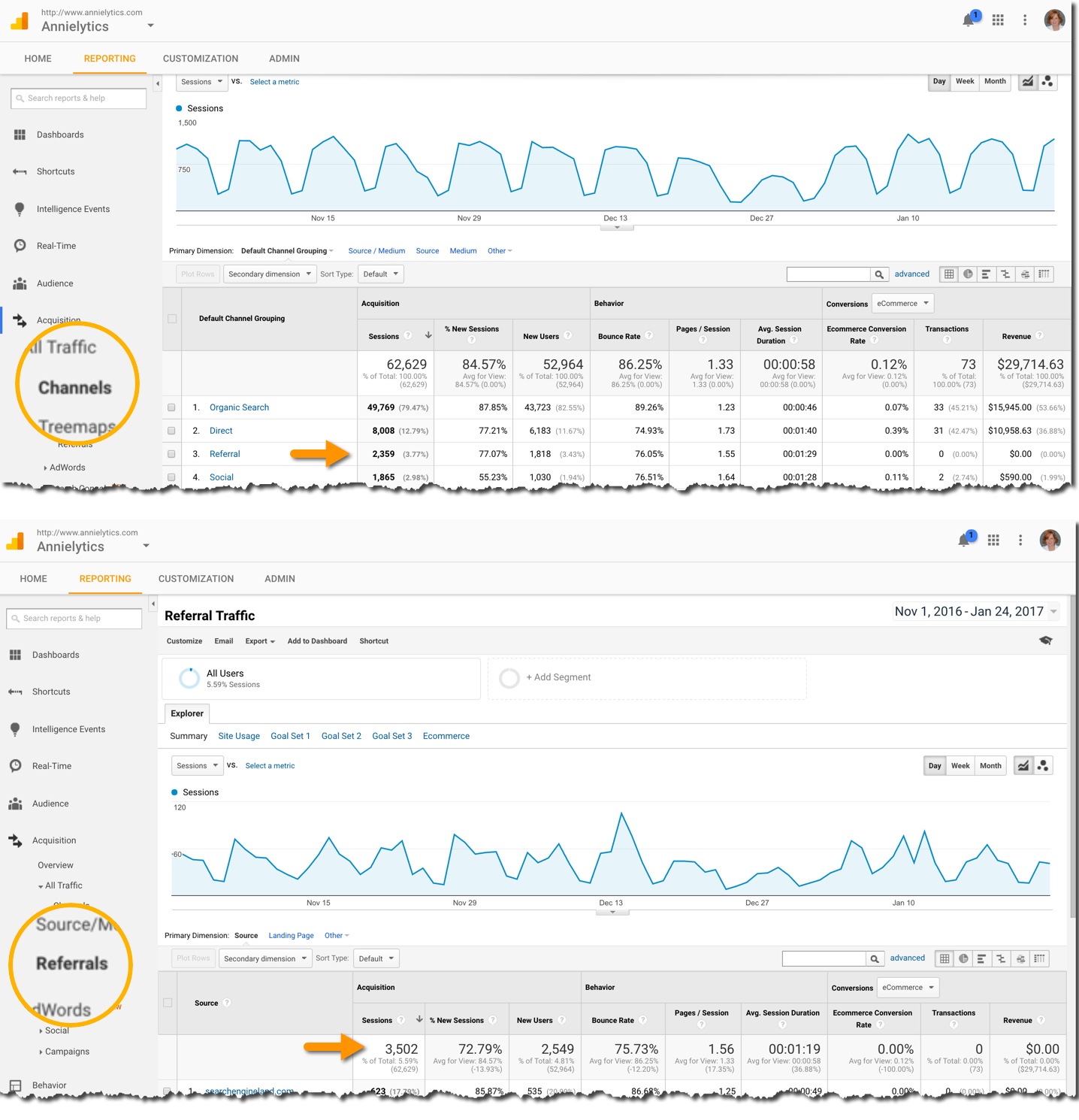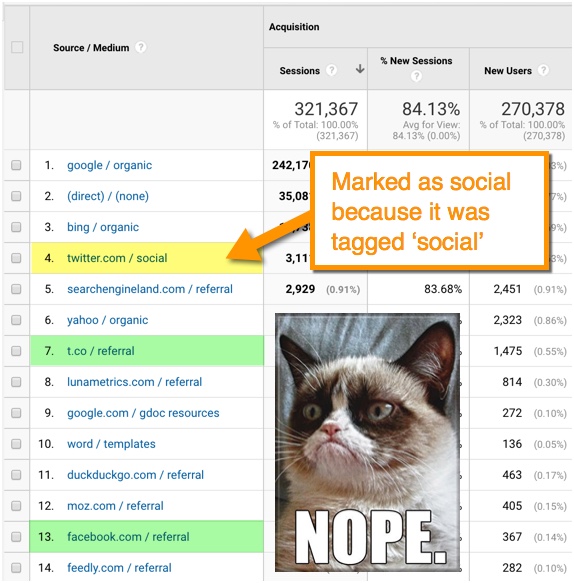Google seems to be of two minds when it comes to social and referral data in Google Analytics. Up until the Channels report came out in 2013 (one of my fave milestones), social and non-social referrals were lumped together in one stew of data. Since the introduction of the Channels report we now have some reports that separate out social and non-social referrals but others that don’t, resulting in quite a bit of confusion as to which numbers to use when compiling social data, also analyzing the data is important, so using a web scraping tool can be helpful to get reliable data from your website.
Why Separate Them At All
Social traffic is characteristically fickle and a bit ADHD. For most sites, these visitors aren’t really interested in doing anything you want them to do (unless maybe you publish listicles and memes). They come in like a wrecking ball (sorry) and slingshot back to Facebook, Reddit, Google Plus (if they work for Google ?), or wherever.
Pure referral traffic (meaning non-social referral traffic) is much less uniform, according to a report published by Sirlinksalot. For my site, visitors from sites like searchengineland.com or moz.com tend to stick around longer than visitors from a site where I may be less known to their audience. For this reason, I always, without exception, analyze my social and non-social traffic separately.
And I think you should too.
Where I Think Google Stopped Short
As I mentioned, when Google gave us the Channels report (Acquisition > All Traffic > Channels), it separated out social and non-social referrals into the Social and Referral channels, respectively. (Yay!) Same with the Overview report under Acquisition. (High fives!) AND all of the Multi-Channel Funnels reports. (You’re on a roll, Googlers!)
But then somewhere along the line a decision was made to still classify social sites as referral in the Referrals and Source/Medium reports, instead of relabeling this traffic as social. (Boo!) This decision may have been with the intention of keeping these reports intact so that referral numbers didn’t precipitously drop off in 2013. But this inconsistency in classification of social sites is confusing to site owners and marketing strategists.
You can see, for example, in the report below that social sites are classified are referral, except for visits from links I’ve tagged with campaign parameters.
I have other issues with the Source/Medium report that I addressed in another post, but this issue of inconsistent classification is yet one more reason I’m really not a fan of this report. But I hope that by the end of the post I hope it will be clear why I clump the Referrals report onto the same data compost pile.
Mismatch Data
Now we’re left with a disconnect that can leave Google Analytics users confused because the aggregated data from the Referral channel (Acquisition > All Traffic > Channels > Referral) doesn’t match that of the Referrals report (Acquisition > All Traffic > Referrals).
This means that you can’t use these reports interchangeably. But most users do not realize that sharing the same label (referral) does not mean they share the same DNA. Quite the contrary, you can see in the report screenshots below that the Referral line item from the Channels report for my website reports 48% fewer sessions than the Referrals report. But there would be nothing in either of these reports that would indicate these reports should not be used interchangeably.

In my opinion, Google really should have seized the opportunity to separate out social and non-social referrals instead of leaving us with an odd kind of amalgam of referral reports. I’m not merely quibbling over pedantics here. This confusion is not without consequence. Social media strategists, in particular, are making decisions based on subtleties and inconsistencies in Google Analytics reports.
And when you couple these inconsistencies with the Hatfields-and-McCoys-level feuding between Google Analytics’ Acquisition and Multi-Channel Funnels reports — which causes conversion data to look very different between these report types — users are left trying to reconcile line-item differences that can have a potentially profound impact on strategic decisions.
My Advice
My advice is threefold:
- Steer clear of the Referrals and Source/Medium reports and instead get your referral data by clicking on the Referral line item in the Channels report to get referral data and the Social line item to get social data.
- Look at the conversion data from your Channels report for last-click attribution and the Assisted Conversions report (Conversions > Multi-Channel Funnels) for conversions that span multiple visits (learn more).
- Avoid Google Analytics social reports like the plague.


I’m working in a hospitality niche where Trip Advisor, Yelp, and other online reviews matter. There is Google Analytics weirdness here too. Why are ‘crowd sourced review sites’ Yelp and Trip Advisor treated as social media? They’re review sites that are ad revenue driven. And full of review spam and competitive shenanigans. Not the same as Social Media, IMHO.
I totally agree. There are quite a few sites I don’t think are social networks, like WordPress sites. They’re blogs, not social sites. I should write a blog post about this.
Thanks for the information, yes keeping both separate will help in checking which area needs improvement in terms of traffic.
I noticed that Google is considering it’s own i.e. google.com traffic in referrals. Strange!
Google has always shown up as a referral. If traffic comes from any Google property outside of an ad or search engine, it’s referral (e.g., Google Docs, Google Maps, etc.).
I’ve seen this mix up with my clients analytics as well! I find it very strange on the way they decide to classify their data. Maybe in the near future they’ll send a massive update to clear things up….hopefully.
Heh. Doubt it. 🙂
Hi again, Annie!
Just curious if you normally recommend cleaning these up by editing the Default Channel Groupings?
Thanks